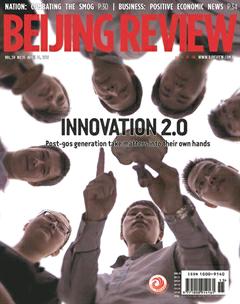The Tie That Binds
2016-04-26ByYuLintao
By+Yu+Lintao
During the recently closed fourth Nuclear Security Summit (NSS) held in Washington, D.C., Chinese President Xi Jinping and his U.S. counterpart, Barack Obama, had their first meeting of 2016. It was the eighth one-on-one meeting of the two presidents in the three years since Xi took office. It was also reported to be the only bilateral meeting Obama held during this years summit.
The top leaders of the two countries are also expected to meet for a dialogue session again this September in Hangzhou, when China hosts the Group of 20, or G20, summit.
The high frequency of top-level communication is seemingly an indication that Sino-U.S. ties are now one of the most critical relationships among world powers.
Such a link is determined not only by their close economic ties, but also their global political and economic status, as they are respectively the worlds sole superpower and the most promising emerging economy.
A set of figures demonstrates this relationships dynamism clearly. Data released in February by the U.S. Department of Commerce indicated that the China-U.S. bilateral goods trade volume reached $598.1 billion in 2015, with China surpassing Canada as the United States largest trading partner for the first time. According to statistics released by Chinas Ministry of Commerce, the United States is now Chinas second largest trading partner after the European Union. Chinese enterprises made $46.6 billion in direct investments in the United States by the end of last year, making the Western power the fourth largest receiver of Chinas outward investment. The ministry also estimated that bilateral trade will exceed $1 trillion by 2024.
Extended interdependence and tightened economic integration are two prominent features of China-U.S. relations. As the saying goes “there was a little bit of me in you and a little bit of you in me.”Therefore, high frequency of contact between government officials is needed now more than ever, while the presidential level of interaction facilitates greater understanding of each others positions and the effectiveness of bilateral communication.
Working together, China and the United States can help create a safer, more sustainable environment. During their last meeting, the two leaders issued a joint statement on nuclear security cooperation to keep nuclear material from falling into the wrong hands. Another example is the second joint statement on combatting climate change they released on March 31, in which the two countries confirmed they will sign the Paris Agreement on April 22. Also, by accomplishing what was considered almost unthinkable just a few years ago, the two countries worked together to help seal the deal in Paris among UN members to cap emissions and seriously reduce human contributions to global warming.
Admittedly, China-U.S. relations are still complicated, and sticking points include the recurring debate about territorial rights in the South China Sea. Other touchy subjects include trade rule making, cybersecurity issues, and so on. While these problems might not be resolved in short order, they do necessitate regular highlevel interactions for constructive management, and to ultimately resolve these flashpoints.
Yet these points of contention have not sidelined the two-way trade that is the cornerstone of the relationship. Xi and Obama at the end of the day are more pragmatic than idealistic in this regard. The two leaders know full well that economic exchange is what fuels commerce and puts food on the table; one issue is unlikely to derail all that is riding on their continued cooperation. To put it another way, they have agreed to disagree.
In fact, in the 37 years since the establishment of their official ties, relations between China and the United States have experienced twists and turns. Leaders of the two countries have gained valuable experience in keeping bilateral relations on the right track, including respecting each others core interests through candid dialogue.
However, as globalization continues, the two nations are likely to come across new points of friction in the years to come. Toplevel officials in both countries should take advantage of opportunities like those provided by the NSS, where they can find common ground on issues of global significance and mitigate tensions where possible.
